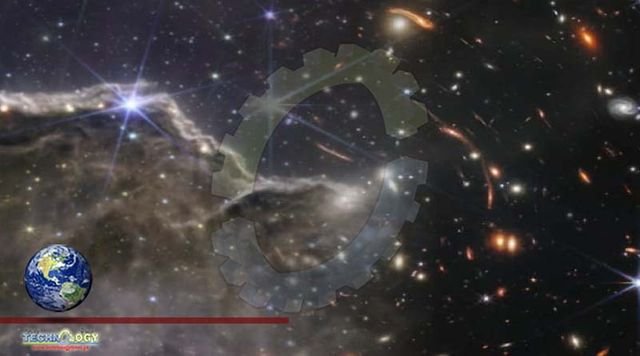To search for alien life, astronomers will search for clues in the atmospheres of distant planets and NASA’s James Webb Space Telescope just proved it’s possible to do so

James Webb Space Telescope The ingredients necessary for life are spread throughout the universe. While Earth is the only known place with life in the universe, detecting life beyond our planet is a major goal of modern astronomy and planetary science. We are two researchers who study exoplanets and astrobiology. Thanks in large part to powerful next-generation telescopes like James Webb Space Telescope, scientists like us will soon be able to measure the chemical makeup of atmospheres of planets orbiting around other stars. It is hoped that we will detect a chemical signature of life on one or more of these exoplanets. Life might exist in our solar system where there is liquid water – such as in the oceans of Jupiter’s moon Europa or in the subsurface aquifers on Mars. Searching for life in these places is incredibly difficult, however, as they are hard to reach and detecting life would require sending a probe to collect and return physical samples. Many astronomers believe there’s a good chance that life exists on planets orbiting other stars, and it’s possible that’s where extraterrestrial life will first be found.
There are around 300 million potentially habitable planets in the Milky Way galaxy alone, according to theoretical calculations, and several habitable Earth-sized planets within only 30 light-years of Earth – essentially humanity’s galactic neighbors. Astronomers have discovered over 5,000 exoplanets so far, including hundreds of potentially habitable ones, using indirect methods that measure how a planet affects its nearby star. While these measurements can give astronomers basic information on the mass and size of an exoplanet, they don’t provide much else To detect life on a distant planet, astrobiologists will inspect starlight that has interacted with a planet’s surface or atmosphere. If the atmosphere or surface was transformed by life, the light may carry a clue, called a “biosignature.”
For the first half of its existence, Earth sported an atmosphere without oxygen, even though it hosted simple, single-celled life. Earth’s biosignature was very faint during this early era. That changed abruptly 2.4 billion years ago when a new family of algae evolved. The algae used a process of photosynthesis that produces free oxygen oxygen that isn’t chemically bonded to any other element. From that time on, Earth’s oxygen-filled atmosphere has left a strong and easily detectable biosignature on light that passes through it. When light bounces off the surface of a material or passes through a gas, certain wavelengths of the light are more likely to remain trapped in the gas or material’s surface than others. This selective trapping of wavelengths of light is why objects are different colors. Leaves are green because chlorophyll is particularly good at absorbing light in the red and blue wavelengths. As light hits a leaf, the red and blue wavelengths are absorbed, leaving mostly green light to bounce back into your eyes.
The pattern of missing light is determined by the specific composition of the material the light interacts with. Because of this, astronomers can learn something about the composition of an exoplanet’s atmosphere or surface by, in essence, measuring the specific color of light that comes from a planet This method can be used to recognize the presence of certain atmospheric gases that are associated with life such as oxygen or methane – because these gasses leave very specific signatures in light. It could also be used to detect peculiar colors on the surface of a planet. On Earth, for example, the chlorophyll and other pigments plants and algae use for photosynthesis capture specific wavelengths of light. These pigments produce characteristic colors that can be detected by using a sensitive infrared camera. If you were to see this color reflecting off the surface of a distant planet, it would potentially signify the presence of chlorophyll.
Source: This news is originally published by scitechdaily